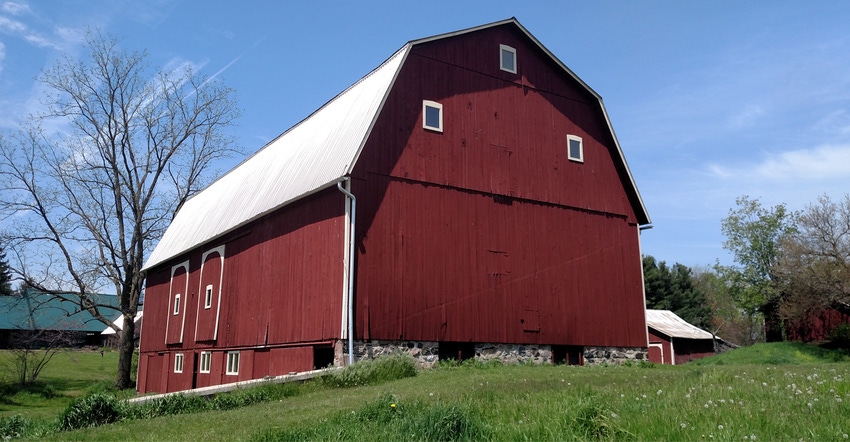August 8, 2017

Edward O. Wilson, an entomologist and author, wrote that humans have “an inherent need” to be connected with animals, plants and nature. He called this need “biophilia.”
For those who have a special desire to be near barns, perhaps a new term should be coined, “barnaphilia.”
In both cases, John and Betty Schoepke, 13165 Center Road, Bath, have well in meeting their needs for nature and barns. It shows in their words and ways.
“Looking southeast over the ponds and fields, we see no houses. There are animals everywhere ... deer … turkeys ... an osprey eating a bass from the pond,” John muses. A large buck even came so close to the house one day that when he turned his head, his antlers tapped the glass on a window, he says.
Of the 40-by-80-foot bank barn, which was built in 1911 and substantially rebuilt after it was damaged by a tornado in 1943, John says “there are three hay drops to the basement, a granary inside with chutes, and all the hayropes and slings are still there.” He points out with satisfaction, “20 years ago we put a new roof on the barn, and several years ago I replaced all the windows and eave troughs. It was worth it.” The barn, which once housed dairy cattle, today is used for storage and sheer enjoyment.
The Schoepkes, who have lived on their farm for nearly 40 years are deeply rooted there. Although they came from farming backgrounds, farming was not their main source of income. Until they recently sold the business, they ran a mail-order products company. Now, they are content to say, they can more fully appreciate their beautiful surroundings.
One of the things that attracted them to this property is that it was a complete farmstead, something which is increasingly rare. The farmhouse, which dated back to the 1890s was not suitable for being upgraded so they had a new house built, making certain it had many, many windows. Their kitchen cabinets are made from ash harvested on their farm, trimmed in cherry from the farm of John’s father. Special English oaks and white pines provide shelter for the final resting places for beloved family dogs.
The farmstead buildings tell a story of connection too. The image of a white horse has adorned the granary since the 1890s. A gravity-filled, windmill-generated concrete tank for keeping livestock watered remains on the property, although the windmill is retired from active duty. Many windmills were relegated to the scrap heap or the back 40 many years ago.
“The windmill is the farmstead’s anchor. It holds it all down,” John says.
An icehouse to ensure proper cold storage of food supplies is also part of the landscape.
Living wonderfully aware of nature has given the Schoepkes a special treat. “On the first day of spring and the first day of fall, the sun comes up between the barn and the silo as viewed from the house,” John points out. “It is sort of like having our own Mayan ruins.”
Often when old houses and barns are lost or destroyed, the fieldstone foundations built by the back-breaking efforts of men and horses long ago, are quickly demolished with them, craftsmanship and nature’s beauty buried beneath mounds of soil. Not so at the Schoepkes. The foundation of an old house was preserved and with the help of a creative landscaper, transformed to a place of beauty.
“It has been a long and wonderful journey getting to where we are now,” say the couple who are in their 70s. “We know we will not be able to live here forever, but yet, that is exactly what we want to do.” Their plan is to protect the farm through conservancy so that it can never be developed.
Arnett writes from Battle Creek.
About the Author(s)
You May Also Like




